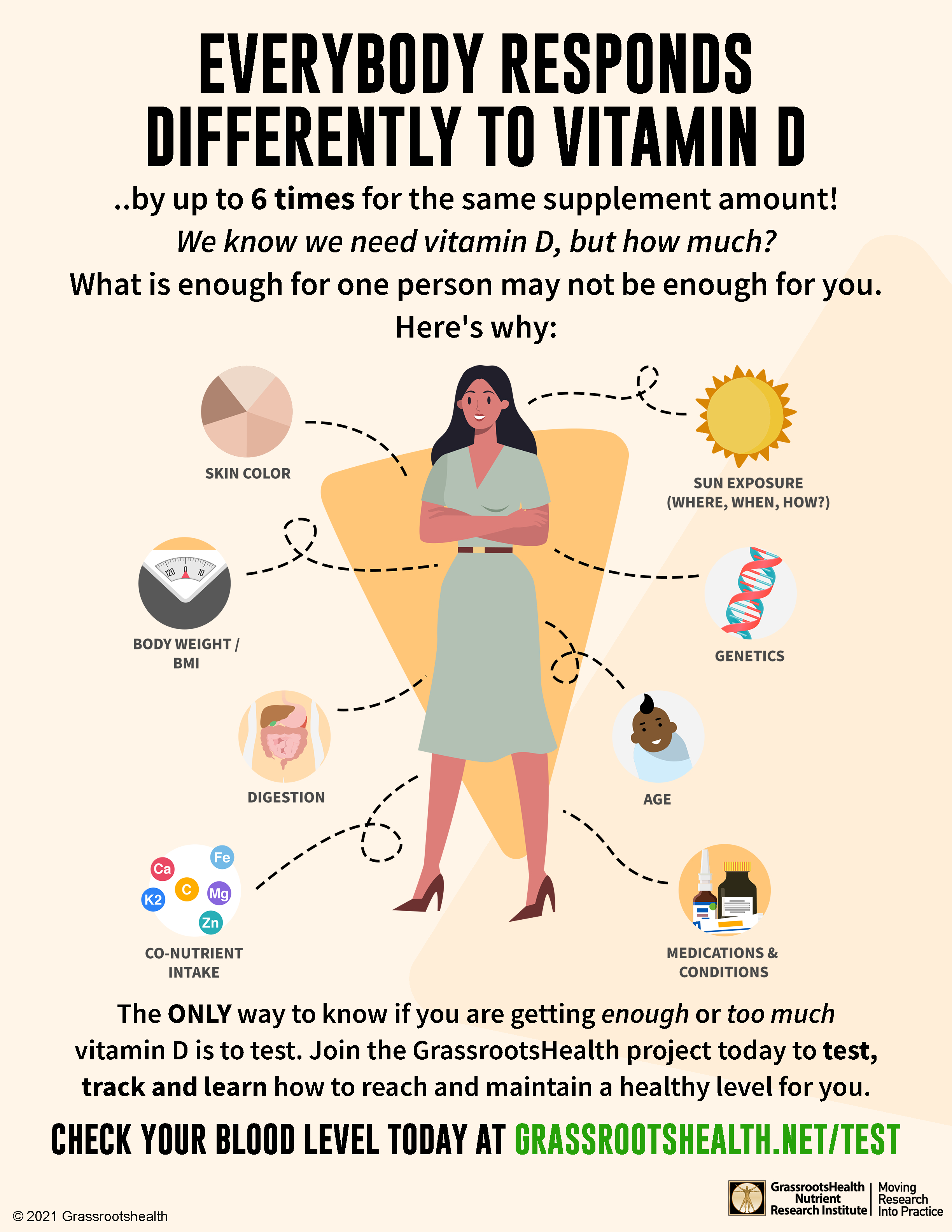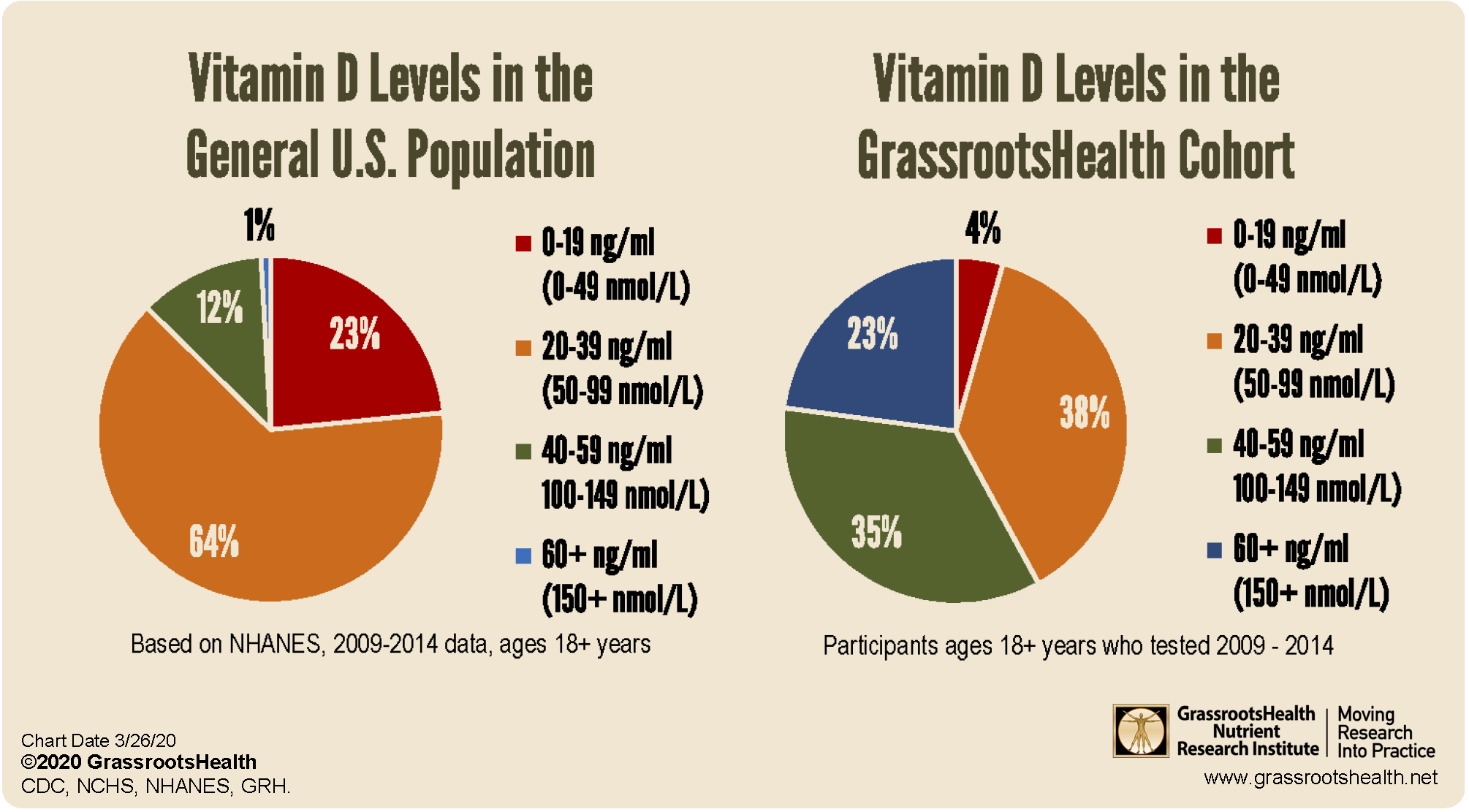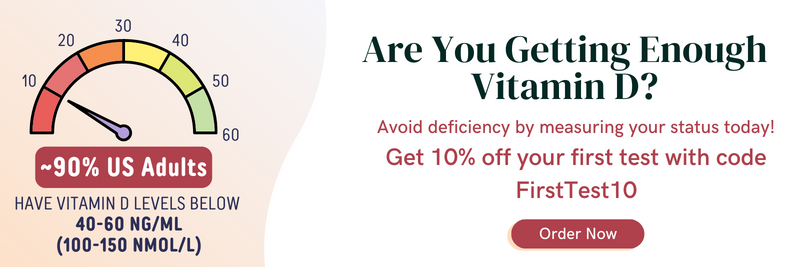Published on July 13, 2022
10% discount on any testing combination offered to all first-time participants… share this opportunity with those who don’t yet know their levels!
Key Points
- When supplementing with either vitamin D or omega-3s, it is impossible to know how much of a dose might be “right” for one person to the next; everyone responds differently to vitamin D… by up to 6 times for the same supplement amount, with a similar variability in the omega-3 dose response
- Almost 90% of U.S. adults in the NHANES data set have a vitamin D level below the recommended range of 40-60 ng/ml; those in the GrassrootsHealth cohort have significantly higher levels than those in the NHANES cohort, yet approximately 42% of participants were also below that range
- The average Omega-3 Index among GrassrootsHealth participants was 5.7%; almost one-fifth (18%) of participants had an Omega-3 Index of 8% or higher; 27% had an index between 6.0% and 7.9%, 45% had an index between 4.0% and 5.9%, and 10% had an index less than 4%
Have you or someone you care about been meaning to check their vitamin D level, but just not made it happen yet? If so, now is the perfect opportunity to take advantage of this special offer for 10% off any first test combination for all new participants – just enter the code FirstTest10 on checkout!
Why You Can’t Assume Your Supplement is Enough
When supplementing with either vitamin D or omega-3s, it is impossible to know how much of a dose might be “right” for one person to the next.
Vitamin D Supplement Dose: Everyone responds differently to vitamin D… by up to 6 times for the same supplement amount! For example, it is possible for a supplemental intake of 4000 IU/day to result in a serum level of 25 ng/ml (62.5 nmol/L) in one individual, and 60 ng/ml (150 nmol/L) in another. A GrassrootsHealth analysis showed that among all adult participants taking an average of 4,000 IU vitamin D per day from supplements, approximately 25% were still below the recommended 40-60 ng/ml.
Omega-3 Supplement Dose: Just as with vitamin D, there is a large amount of variability in the omega-3 status for different people with the same intake amount. For example, our initial analysis showed that the range of response with 1000 mg of EPA+DHA per day was 5.7% to 10.2%. This large amount of variability is similar to what we have observed for vitamin D.
Conclusion: You need to measure your levels to make sure you are getting enough
Build your custom test kit to measure your vitamin D along with any combination of omega-3s, magnesium plus elements, hsCRP, HbA1c, and others, or choose from our most popular kits:
Vitamin D Test | Vitamin D & Omega-3 Index | Immune Boost Panel |
|---|---|---|
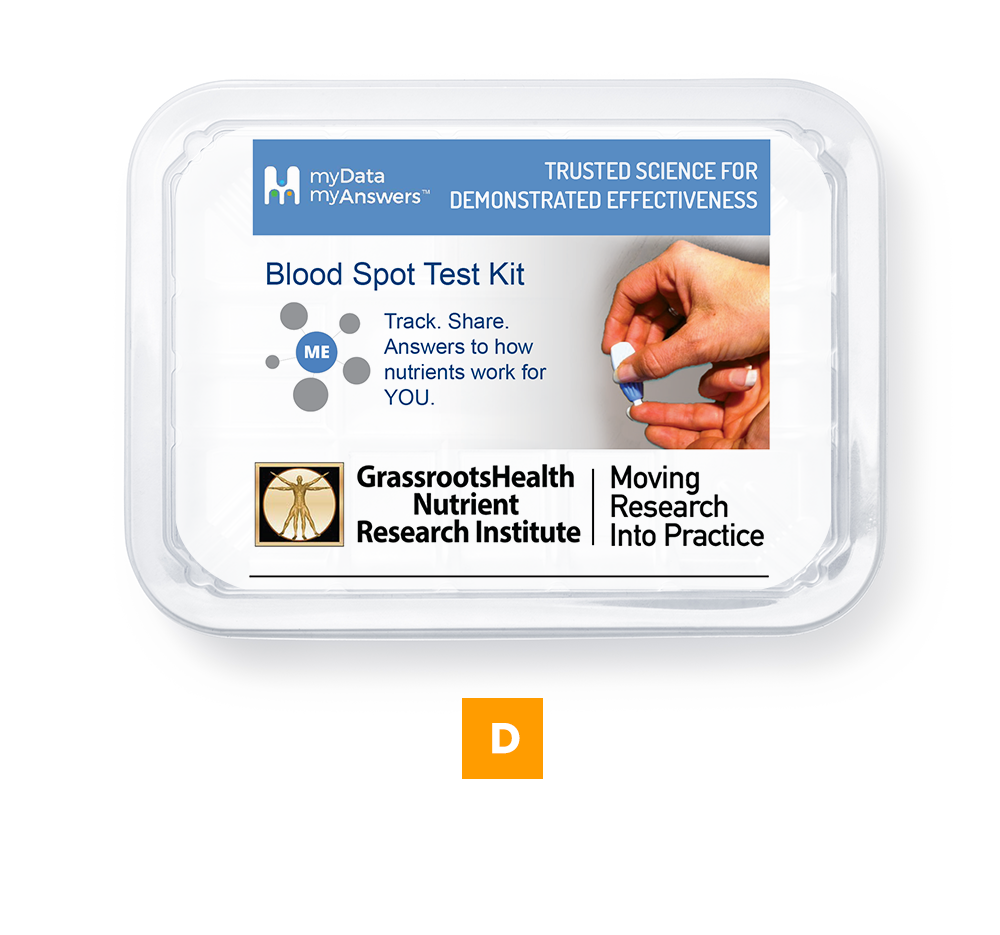 | 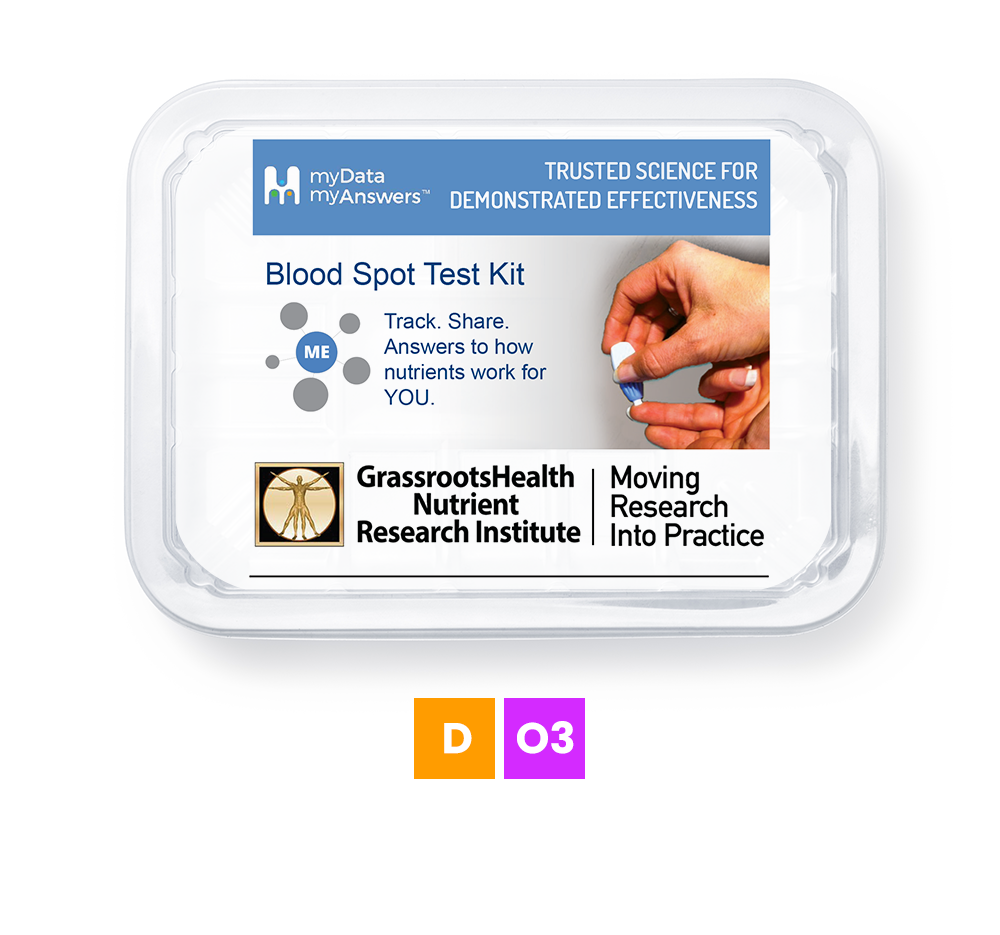 | 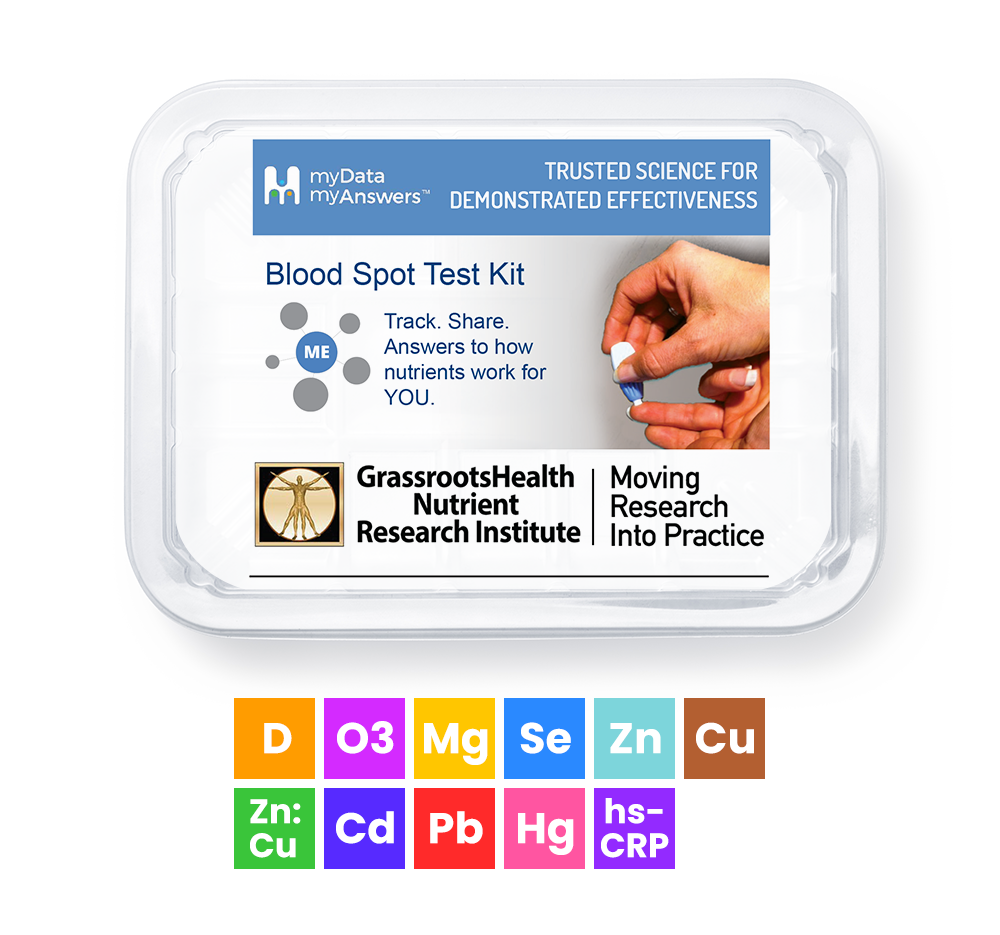 |
Everyone Responds Differently to Vitamin D Supplementation and Sunshine
Whether getting your vitamin D from sun or supplement, several factors can affect how much vitamin D is made, absorbed, or converted for use in the body. The infographic below summarizes some of these different factors that can affect how much vitamin D the body may actually be getting on a daily basis.
Click to Download, Share & Print
(Great message to share with anyone who is concerned about their health!)
Are you relying on supplements to get your vitamin D? If so, it is important to understand how certain factors can influence how an individual’s vitamin D level responds to their vitamin D supplementation amount (called the dose-response). These factors can cause the wide range of serum level responses that can be produced when looking at any specific supplementation amount.
What is the Chance that You Are Vitamin D Deficient?
The pie charts below are an illustration of vitamin D levels in the US population, based on National Health and Nutrition Examination Survey (NHANES, 2009-2014) data, compared to those of participants in the GrassroostHealth cohort.
The charts above clearly show the difference in distribution in vitamin D levels among adults. Almost 90% of U.S. adults in the NHANES data set have a vitamin D level below the recommended range of 40-60 ng/ml! Those in the GrassrootsHealth cohort have significantly higher levels than those in the NHANES cohort; yet approximately 42% of GrassrootsHealth participants were also below that range.
Supplementation Does Not Always Provide Expected Change
Why not just take a supplement? Among 5,442 GrassrootsHealth participants who completed at least two vitamin D tests, approximately half (51%) achieved 40 ng/ml on their first test compared to two-thirds (67%) on their second test – leaving 1/3 of those who re-tested still below the 40 ng/ml target level.
Don’t Forget to Include Omega-3s!
According to an analysis among 2,777 participants who tested their Omega-3 Index, the average index was 5.7%. Almost one-fifth (18%) of participants have an Omega-3 Index of 8% or higher; 27% have an index between 6.0% and 7.9%, 45% have an index between 4.0% and 5.9%, and 10% have an index less than 4%.
Using Your Results, You Can Calculate an Appropriate Dose
After getting your vitamin D and Omega-3 Index results, use the calculators available on the GrassrootsHealth website to determine how much more vitamin D or omega-3s (DHA+EPA) may be needed on a daily basis to help you reach a target level. If you are already at your target, great… keep up the good work!
Becoming a participant of GrassrootsHealth means that you are joining thousands of people in collaborating on nutrient research – we call it “Citizen Science.” Citizen science welcomes everyone’s participation in the discovery and sharing of scientific knowledge. Whether it is research on the environment, behavior of animals, or how certain things affect our health, participating through sharing your own observations and data can be of extreme value to projects relying on citizen scientists. This is real world evidence! We appreciate ALL of our Citizen Scientists!
See if your nutrient status could improve today. Create your custom home blood spot kit and choose from the following measurements to add to your vitamin D:
- Omega-3 Index (with or without Ratios)
- Magnesium (with or without added Essential and Toxic Elements)
- hsCRP (a measure of inflammation)
- HbA1c (a measure of blood sugar)
Having and maintaining healthy vitamin D levels and other nutrient levels can help improve your health now and for your future. Enroll and test your levels today, learn what steps to take to improve your status of vitamin D (see below) and other nutrients and blood markers, and take action! By enrolling in the GrassrootsHealth projects, you are not only contributing valuable information to everyone, you are also gaining knowledge about how you could improve your own health through measuring and tracking your nutrient status, and educating yourself on how to improve it.


